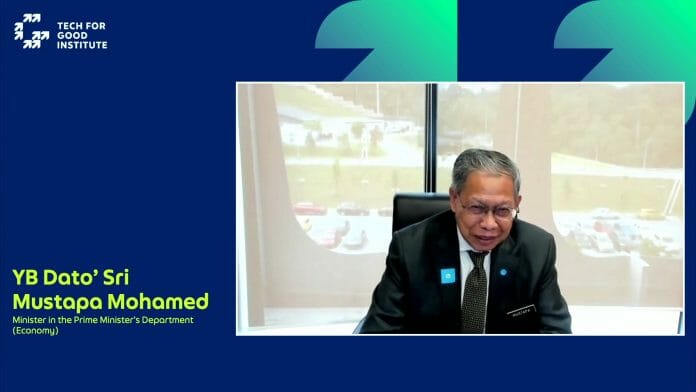In March next year, Malaysia is going to work hand-in-hand with state governments, civil society organizations, and the private sector, in implementing hardcore poverty eradication programmes in the poorest localities of Malaysia, says Minister in the Prime Minister Department (Economy) Mustapa Mohamed.
“We will adopt a holistic and targeted approach to eradicate hardcore poverty in about fifty localities throughout Malaysia. There is no one-size-fits-all solution for poverty. Our strategies will be tailor-made, based on the unique features of each locality,” he says in delivering a speech on the World Bank Malaysia Economic Monitor Report Staying Afloat.
Mustapa shared his thoughts on Malaysia’s new approach to eradicating hardcore poverty, the need to improve the quality of human capital and increase income levels of Malaysian households and on the promotion of inclusivity and a while-of-society approach in the formulation and implementation of policies.
While GDP growth is expected to be between 3 and 4 percent in 2021, the further reopening of economic and social sectors, as well as stronger external demand from major trading partners, is expected to see GDP growth between 5.5 and 6.5 percent in 2022. This is in line with the World Bank’s projection in this MEM of 5.8 percent growth in 2022.
As much as the Government’s short-term policies are important to drive our economic recovery in 2022, “it is equally critical that we put in place medium and longer-term institutional reforms to strengthen our resilience.
“Certainly, one of the hardest hit groups during the pandemic has been vulnerable households. These include: Firstly, those in lower-income groups, most of whom are in the MSME sector; Secondly, those who have lost their jobs; Thirdly, those with few or no assets or savings to fall back on; And Fourthly, informal workers who are not adequately covered by social safety nets,” he says.
He says the Government is committed to eliminating hardcore poverty by 2025. For this purpose, a Poverty Unit under the Economic Planning Unit has been set up to coordinate policy matters on poverty alleviation at the national level. This Unit, together with the Implementation Coordination Unit (ICU), will coordinate strategies and programmes to sustainably raise the incomes of the hardcore poor.
“In this regard, we acknowledge the inputs by our colleagues from the World Bank team here and globally, in sharing best practices in poverty alleviation. I take note of the World Bank’s recent report on Multidimensional Poverty (MPI) in Malaysia, entitled ‘Improving Measurement and Policies in the 2020s’. The Malaysian MPI, first introduced in the 11th Malaysia Plan, consists of four dimensions, namely health, education, living standards, and income. In making our measurement of MPI more inclusive, the Government will take into account the World Bank’s suggestion of setting more ambitious income and non-income poverty indicators,” he says.
Malaysia aspires to be a high-income nation by 2025. According to the World Bank’s projections, Malaysia is expected to exceed the threshold that defines a high-income economy at some point between 2024 to 2028.
“One issue we have to address in order to achieve high-income status is low wages. A Department of Statistics (DOSM) survey on wages and salaries in July 2021 shows that the percentage of workers in our country earning less than RM3000, is now at about 65 percent.
“There was also a DOSM study on university graduates in July 2021 showing a worrying trend of declining numbers of graduates working in the skilled category. The skilled category refers to professional and managerial positions. About 31 percent of graduates are still working in semi-skilled and low-skilled categories.
“In the Twelfth Plan, our target is to improve the share of Compensation of Employees to GDP from 37.2 percent to about 40 percent. If we want to achieve this target, we need more and more Malaysians working in the skilled category. CE refers to the total gross wages paid by employers to employees as a percentage of our GDP,” he says.









